WIDESPREAD WELFARE ISSUES SHOW NEW ZEALAND SHOULD BAN LIVE EXPORT IMMEDIATELY
Posted on March 12, 2022
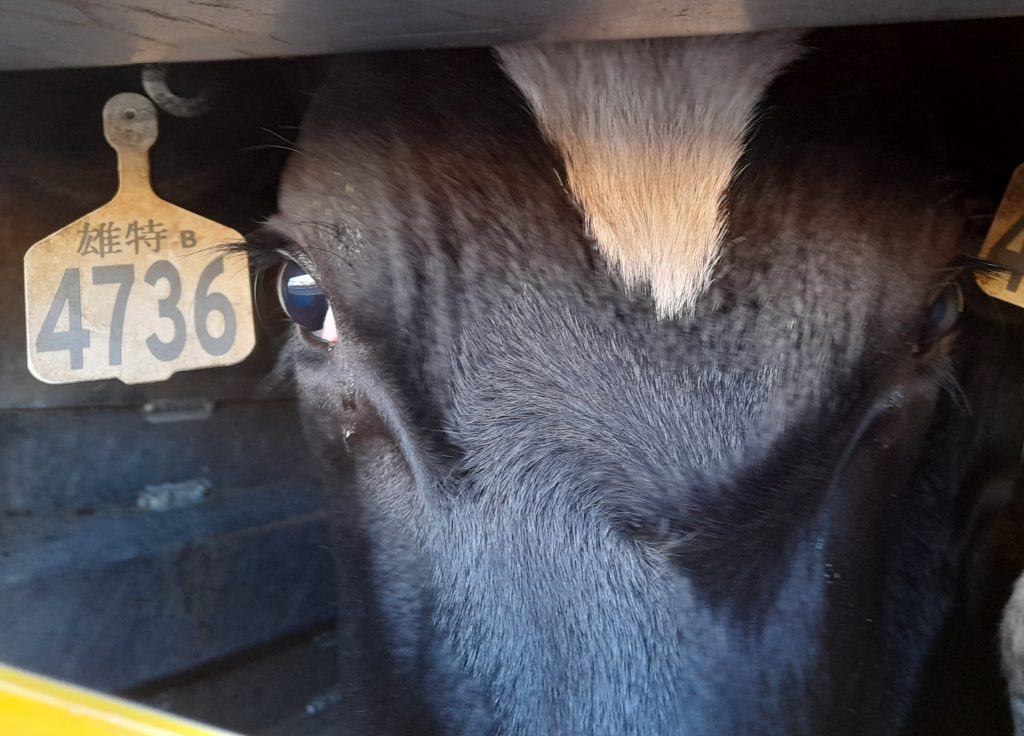
Long distance live animal transport is a worldwide phenomenon. Animals transported by sea can be subject to journeys that last for weeks. They suffer from seasickness, weather vagaries, injuries, and illnesses, and some don’t survive. During loading and unloading in ports many endure rough handling and cruelty, and their slaughter often takes place in unregulated abattoirs. Transporting animals overseas, whether for slaughter or breeding purposes, is cruel and torturous. We must put an end to such suffering.
End Animal Slaughter contributor Summer Aitken reviewed copies of veterinarian reports for five shipments of cattle exported from Aotearoa New Zealand to China between April and May 2021. Obtained under the Official Information Act 1982 the reports describe appalling conditions, numerous deaths, disease, illness, infection, and graphic injuries amongst the animals. As welfare issues are still widespread, Aitken calls for the ban on live export to be effective immediately.
Feature photo is of a young, pregnant dairy cow arriving at Port Taranaki to board the Ocean Ute for China (Photo: Summer Aitken).
In 2021 the New Zealand government acknowledged welfare issues and announced a ban on the export of some animals by sea. However the ban does not come into force until 30 April 2023. Unfortunately, instead of seeing a gradual winding down as the government proposed, the practice has significantly increased with approximately 120,000 live cattle exported from New Zealand to China since the 14 April 2021 announcement (Ministry for Primary Industries, 2022). One apparent issue is the high number of pregnant animals being exported. When the Al Kuwait departed from Timaru in April 2021 there were 2,368 pregnant cows on board. The report for the voyage of the Yangtze Fortune from Napier on 14 April 2021 openly lists heifers as either pregnant or “empty.”
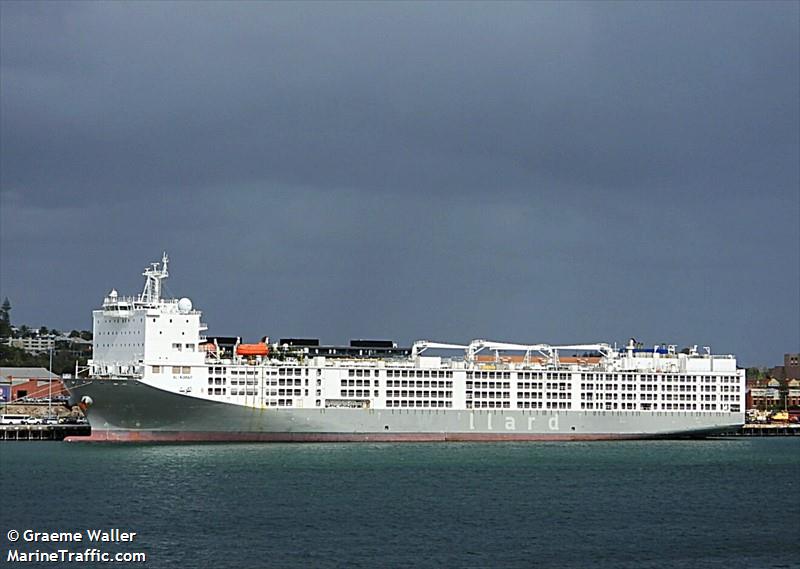
Livestock Carrier Al Kuwait
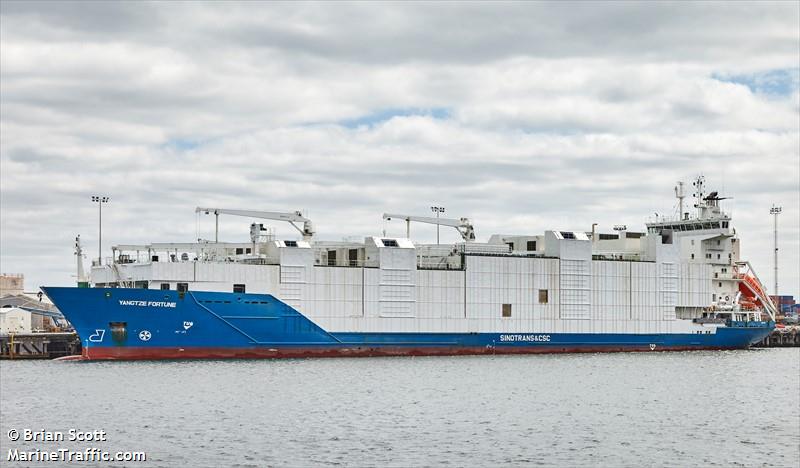
Livestock Carrier Yangtze Fortune
Exporting pregnant animals is so common that the report template specifically asks for the number of cows who experience abortions during the voyage. During the 21-day journey of the Brahman Express from Timaru in May 2021, three cows aborted their pregnancies. An article from Washington State University explains that heat stress and maternal infection are common causes of pregnancy loss in cows (Tibary, 2021).Seven fatalities were reported in all, including three pregnant Friesians who died from heat stress. Reported symptoms included abdominal discomfort, tremors, and mouth-breathing. One of these heat stressed individuals was described as “recumbent and not getting up” and was subsequently “hosed down” until she got to her feet. She died the following morning.
Reported symptoms included abdominal discomfort, tremors, and mouth-breathing. One of these heat stressed individuals was described as “recumbent and not getting up” and was subsequently “hosed down” until she got to her feet. She died the following morning.
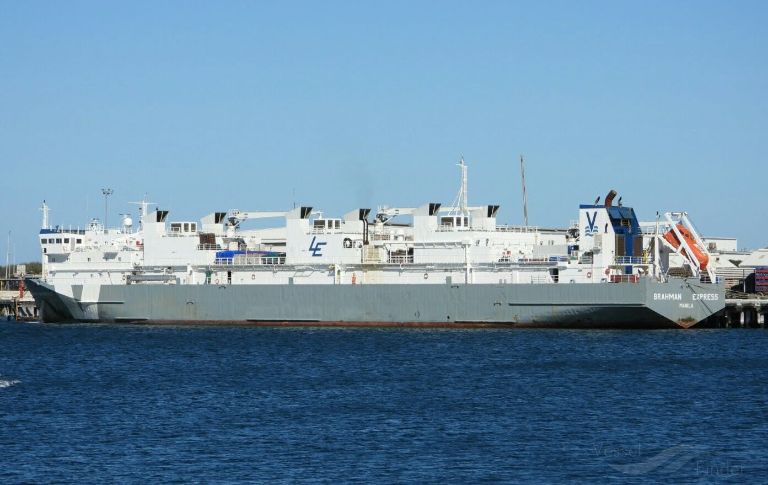
Livestock Carrier Brahman Express (photo: Graham Waller)
Another vessel, the Yangtze Harmony, departed Napier on 8 April 2021 and reported 16 deaths during the voyage. Equally disturbing is the suffering these animals endured. A specific section for reporting on fractures reads, “Two leg fractures occurred early on the trip likely during loading. One neck fracture confirmed and one suspected, from being stuck in railings. Rib fractures in one animal presumed from trampling.” The animal who had fractures in their right hind leg was not euthanised until ten days into the voyage on the 18 April 2021. If they broke their leg during the loading process as the report suggests, then they were left to suffer for an unacceptable length of time.
“Two leg fractures occurred early on the trip likely during loading. One neck fracture confirmed and one suspected, from being stuck in railings. Rib fractures in one animal presumed from trampling.”
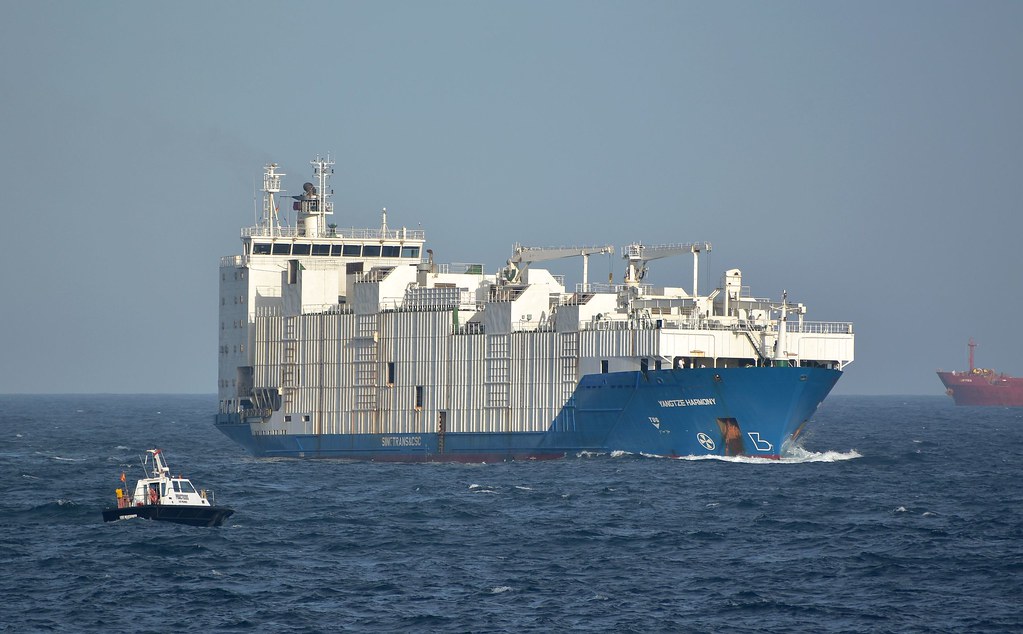
Livestock Carrier Yangtze Harmony (photographer unknown)
The following excerpts are from the section listing causes of mortalities:
25/4/21 Broken neck. Stuck in railings.
25/4/21 Sudden death. Post mortem findings – shipping fever (lung infection).
28/4/21 Sudden death. Post mortem findings – no abnormalities. Diagnosis unknown.
28/4/21 Unable to stand. Unwell several days. Minimal response to treatment. Euthanised.
01/5/21 Progressive weakness and reluctance to rise. Died during discharge prior to euthanasia.
01/5/21 Broken ribs right side. Died during discharge prior to euthanasia. Unable to post-mortem as crew disposed of body.
01/5/21 Nerve damage preventing hind feet from bearing weight. Unable to rise. Euthanised.
01/5/21 Blind, weak. Lame left fore. Unable to discharge as difficult to draft/move. Euthanised.
01/5/21 Infected left foreleg from full thickness necrotising skin wound on elbow. Euthanised.
01/5/21 Infected right foreleg from full thickness skin wound on elbow. Died during discharge. Post mortem showed severe necrotising. Infection spread across shoulder and body.
01/5/21 Lameness earlier in trip. No attempt made to stand. Unable to get her off the ground. Euthanised.
Regarding the conditions on the decks where the animals were housed, the veterinarian noted that, “Drainage issues on level 1 during the second half of the trip resulted in a mouldy odour on this deck. The amount of sores over joints and animals with some degree of lameness at the end of the trip suggests to me that the bedding/flooring be reviewed. These sores seem to be leading to a nasty type of infection as seen at post mortem.” Pink eye was also reported to be widespread with some cases being described as severe and at least one case resulting in blindness.
“Drainage issues on level 1 during the second half of the trip resulted in a mouldy odour on this deck. The amount of sores over joints and animals with some degree of lameness at the end of the trip suggests to me that the bedding/flooring be reviewed.
The information in these reports raises concerns around the continuation of an industry which many believe has already been banned. The conditions endured by the animals are so ill-suited that they breach New Zealand’s Animal Welfare Act – standards which have been put in place to prevent unnecessary suffering. There is no way to justify the continuation of this harmful practice into 2023. New Zealand must implement an immediate and definitive ban on live export in New Zealand, effective immediately.

Summer Aitken is a Taranaki Animal Save activist, who has been campaigning against Live Export in Port Taranaki.
← NEXT

